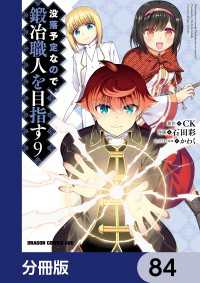Full Description
This book explores the notion of affective space in relation to architecture. It helps to clarify the first-person, direct experience of the environment and how it impacts a person's emotional states, influencing their perception of the world around them.
Affective space has become a central notion in several discussions across philosophy, geography, anthropology, architecture and so on. However, only a limited selection of its key features finds resonance in architectural and urban theory, especially the idea of atmospheres, through the work of German phenomenologist Gernot Böhme. This book brings to light a wider range of issues bound to lived corporeal experience. These further issues have only received minor attention in architecture, where the discourse on affective space mostly remains superficial. The theory of atmospheres, in particular, is often criticized as being a surface-level, shallow theory as it is introduced in an unsystematic and fragmented fashion, and is a mere "easy to use" segment of what is a wider and all but impressionistic analytical method. This book provides a broader outlook on the topic and creates an entry point into a hitherto underexplored field.
The book's theoretical foundation rests on a wide range of non-architectural sources, primarily from philosophy, anthropology and the cognitive sciences, and is strengthened through cases drawn from actual architectural and urban space. These cases make the book more comprehensible for readers not versed in contemporary philosophical trends.
Contents
1. Introduction. Life in Space 2. What is Space all About? 3. Objects and Stranger Things 4. The Living Body 5. Sensing the Environment 6. Motion, Emotion 7. Gestures and Rituals 8. The Space between Subjects 9. The Feeling Space 10. Forms of Time 11. The Affective City 12. Interiors 13. On the Archaeology of Emotions 14. The Primacy of Feeling








